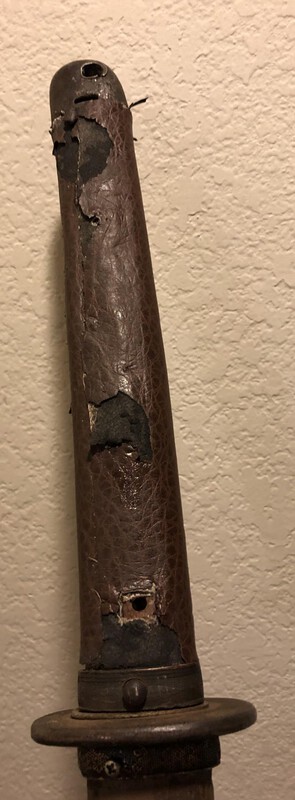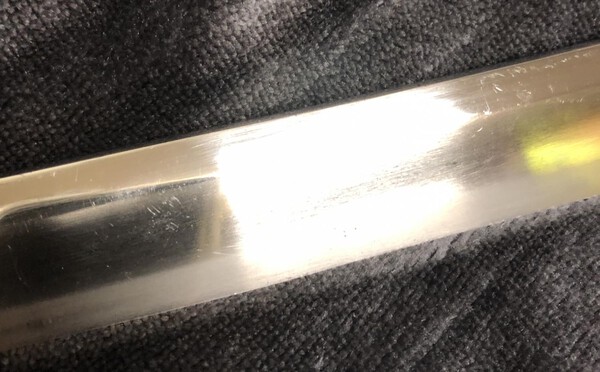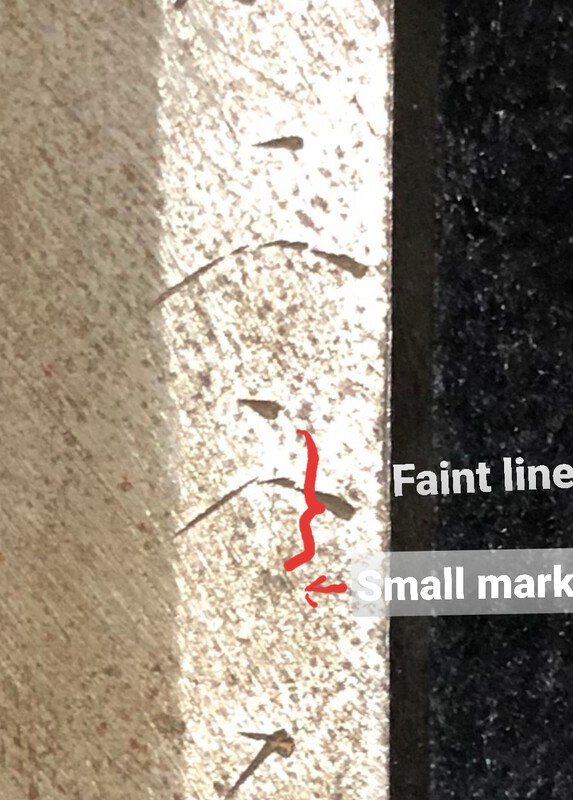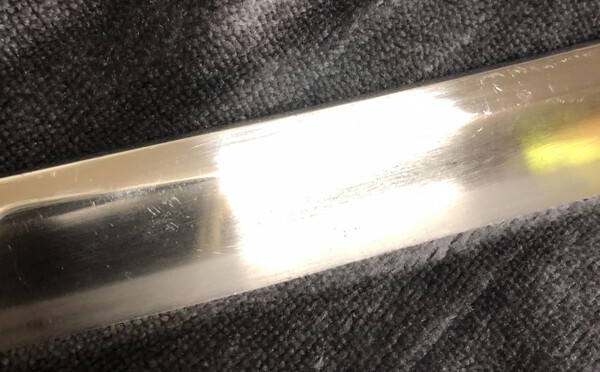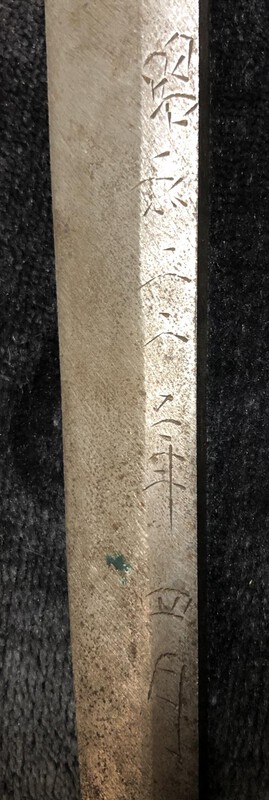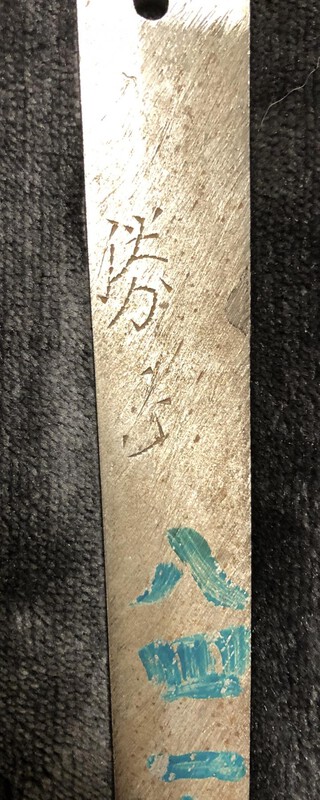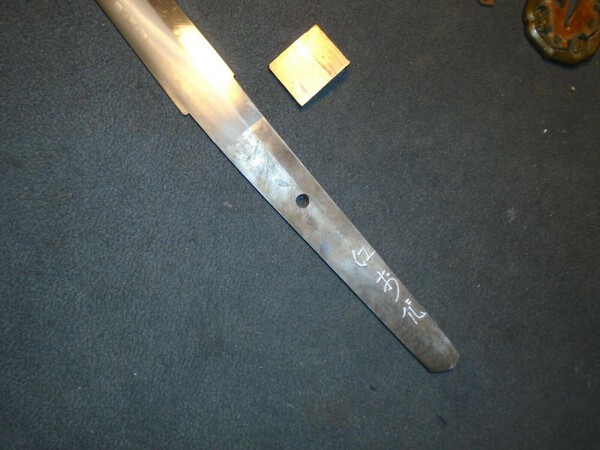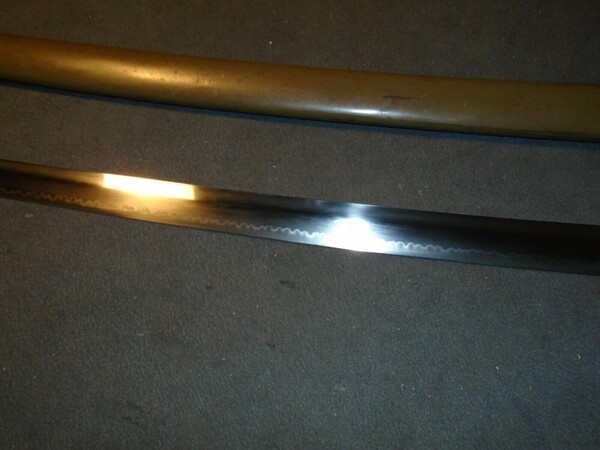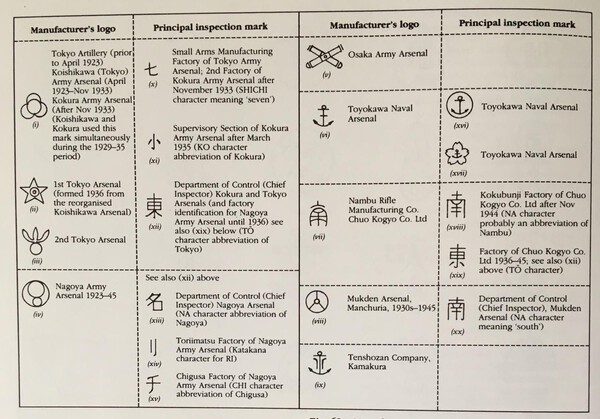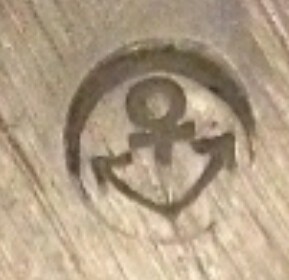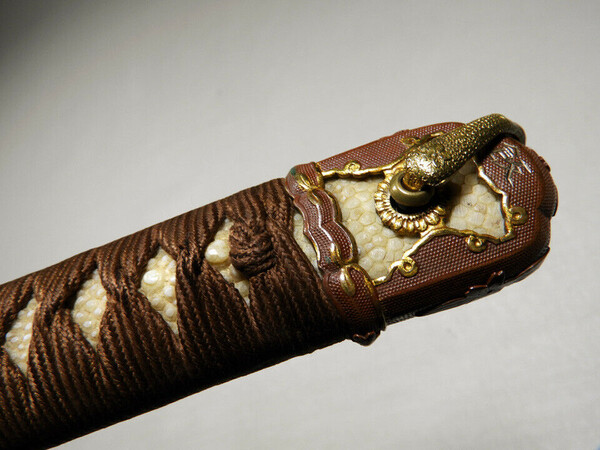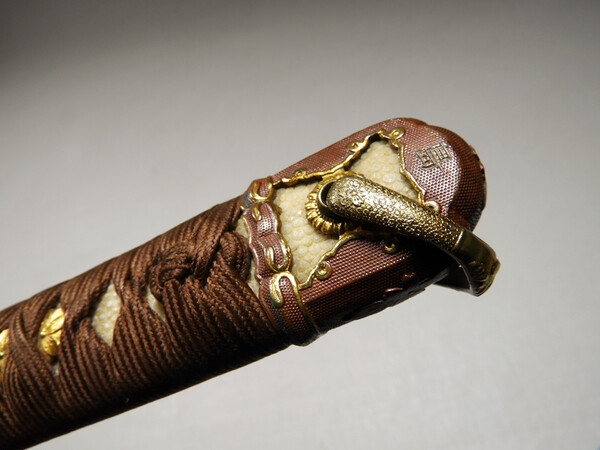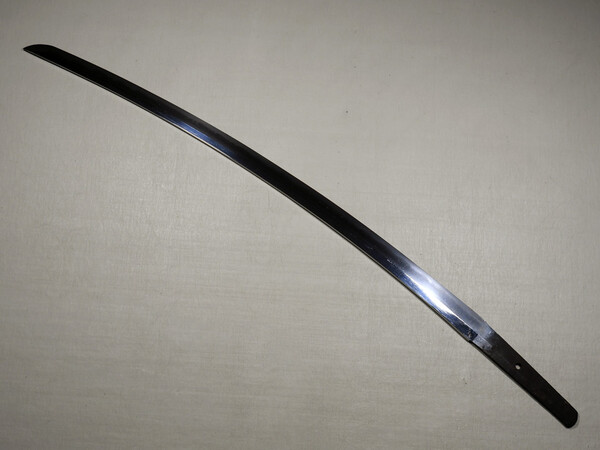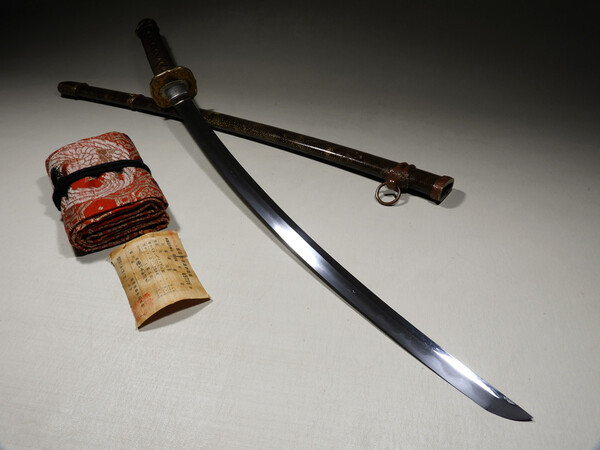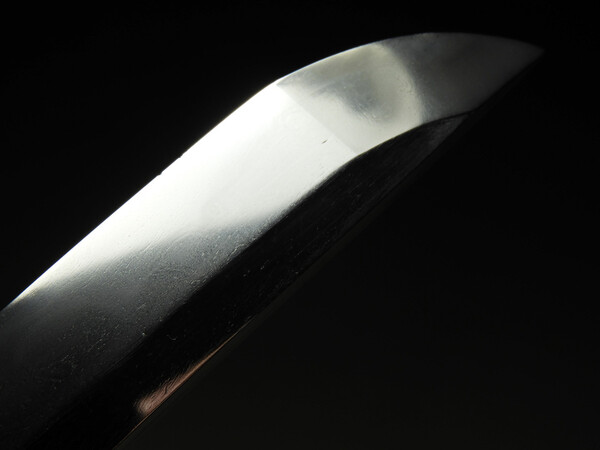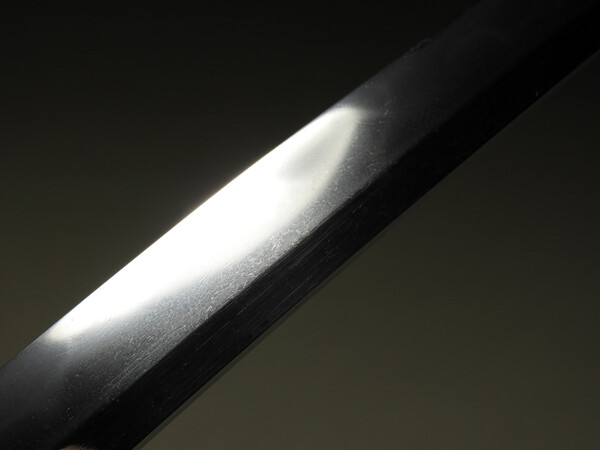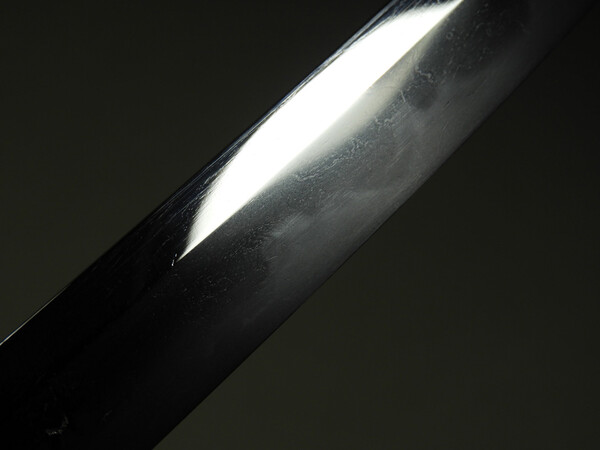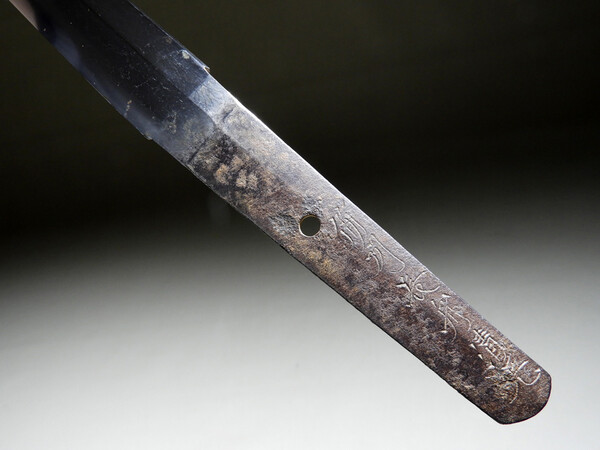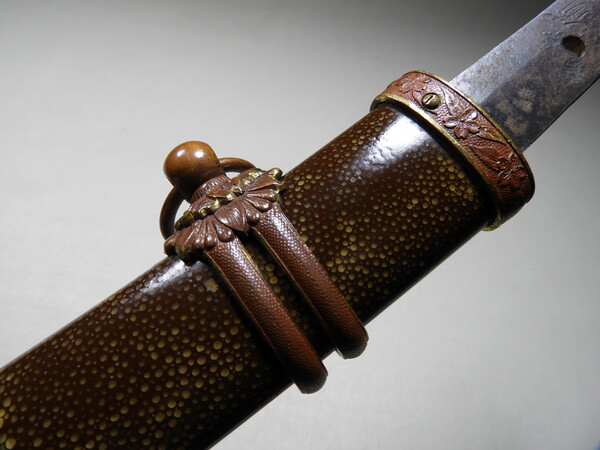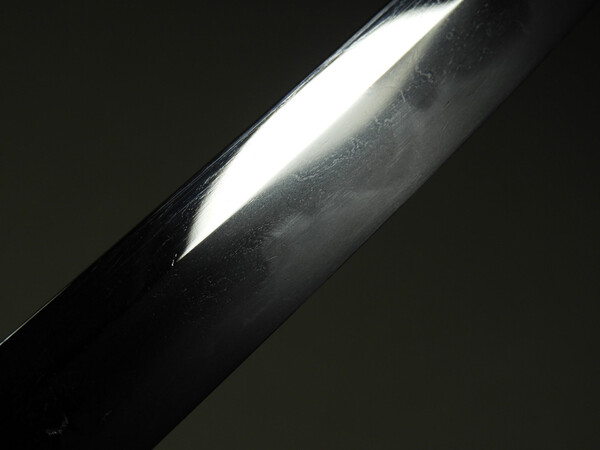-
Posts
13,024 -
Joined
-
Last visited
-
Days Won
155
Content Type
Profiles
Forums
Events
Store
Downloads
Gallery
Everything posted by Bruce Pennington
-

Police Short Swords or Franken sword
Bruce Pennington replied to MacTheWhopper's topic in Military Swords of Japan
Nice little one Kenny! Kanji are just “10 3” or 13. Don’t know the significance. -

Attention Mantetsu Owners: A Survey
Bruce Pennington replied to Bruce Pennington's topic in Military Swords of Japan
Thanks Possom! I didn't have that one, I appreciate it! -
I just picked up a Rinji Sheishiki (Type 3) for resale and it's got, what I thought was a leather wrapped tsuka. But after a closer look, I think it's a post-war Bubba-job. Did the Japanese use naugahyde in WWII? Google says it was invented in the USA in 1936. So, I guess it's possible on this 1945 gunto, but it just doesn't seem right to me. It's a sloppy seam and the kabutogane has the hole where the end of an ito wrap would terminate. So what do you think? If Bubba-work, then I have another question for you to opnine about: Knowing that for $200 or less, I could get this re-wrapped in the correct Rinji way ... but should I? Or should I simply resell "as is" and advise the new owner that he can get a rewrap? I'll be frank, I bought it for $600. A re-wrap would bring my costs up to $800. And that's probably right up to the market top-end for a late-war Rinji. But I think it would be more attractive for re-sale if it looked better. As you can see, I'm not good at this buying & selling stuff! But as a rookie, I'd like to hear your thoughts.
-

Little Help from my Friends?! Please!
Bruce Pennington replied to Bruce Pennington's topic in Translation Assistance
Thanks guys! My first thought was "2 2" i.e. "4" also, but that would make this blade made in 1929. While that is certainly possible, I think it unlikely. That was a very low time in the era of sword making, except for the western style blades. While Murata had instituted oil quenching, I doubt it was being used for the old-style blades like this. Admittedly, I'm weak at my ability to distinguish between oil and water quenched hamon, I think this one was oil quenched. (pictures added). Additionally, almost all blades in Rinji fittings are from the '42-44 years. Exceptions are out there, but the odds of this Rinji housing a '29 blade are slim. What I think we are seeing is a very weakly struck "10". I've enlarged and noted the lines of it. I can see a very faint vertical line and a very faded bottom strike of the line. I suppose, it will have to be called a "probably 1945" on the date, with a "possible 1929" noted. -
Josh, Something like this: https://www.ebay.com/itm/501-Japanese-Samurai-Edo-Antique-Short-wakizashi-sword-nice-koshirae/383433638624?hash=item59466d02e0:g:S18AAOSwZgheUmah&redirect=mobile No guarantee it will fit properly, but some guys have had some success.
-
I forgot about that Dave, but you are right about that!
-
A weakly struck mei on a Rinji Seishiki (Type 3). I tried really hard to break this one myslef, but no luck. The date is April 1945, if I have that right. Can someone translate this one for me, please? (my guess is "Kunihiro", but I'm usually wrong!)
-
I also wondered about the very white, imitation same'. The ones I've seen on gunto are more yellowish, and not so white - so mabye a brand-new, rebuilt tsuka? And a minor edit - stamp is Toyokawa. Kenny, Did you get a translation on the smith name?
-

What is the state of the market currently?
Bruce Pennington replied to markturner's topic in Nihonto
Mark, Over the past 2 years, in the military market, officer gunto have fallen a bit and NCO gunot rose rapidly. That seems to have stabilized lately, though. When I got into this 5 years ago, and officer gunto went for $1,200-1,400 while NCO gunto were $650-750. Today, officer gunto range from $600-1,200 and NCO gunto are $900-1,400. -

Ebay seller Showa22
Bruce Pennington replied to ww2collectors's topic in Auctions and Online Sales or Sellers
Showa22 has an Emura for sale. Like Dwain said, the nakago on his blades always look like they've been cleaned: -

Signature on Tang WWII Naval Sword Blade
Bruce Pennington replied to MacTheWhopper's topic in Translation Assistance
-
That one I saw in Narita had the bigger mei: 長運斎江村作 - Chounsai Emura saku http://www.militaria.co.za/nmb/topic/29741-help-with-mei-please/
-
Well said Paul and JP! In this, I say: I collect........ therefore I am.
-

Yamakami Akihisa Late War (Type 3) Gunto
Bruce Pennington replied to MacTheWhopper's topic in Military Swords of Japan
You can read a good deal about them here: http://www.warrelics.eu/forum/Japanese-militaria/deflating-another-myth-type-3-army-officer-s-sword-expanded-version-584796/ And about RJT blades: http://www.militaria.co.za/nmb/topic/23887-informations-about-the-rjt/?hl=star -

Yamakami Akihisa Late War (Type 3) Gunto
Bruce Pennington replied to MacTheWhopper's topic in Military Swords of Japan
The second chuso (scabbard locking clip) is missing, but originally, this was a double-chuso set of fittings, which we have come to exptect on star-stamped gendaito in Rinji Seishiki (Contingency) mounts. Kenny, For the record: Japanese Officer gunto (gunto - "Army sword"), Contingency model of the Type 98 officer sword. Sometimes called a "late-war" model, or "Type 3", but they were originally ordered up by the Army in 1938. Yet, they are almost always seen with blades made in the '40s. Yours was made in December of 1942. The blade is what we call a gendaito, or nihonto, which means traditionally made. The star stamp attests that the smith made it in accordance with strict Army regulations/specifications, with Japanese steel (tamahagane), and using tradional methods. The "matsu" stamp and serial number on the tang (nakago) are often seen on Akihisa blades. It's not really known the reason, whether a tracking system for the smith or for army contract. -

Interesting eBay listing 'KIYOMITSU'
Bruce Pennington replied to m4l700's topic in Military Swords of Japan
David, I put this on the Translation Assistance forum. Raymond Singer says the kanji are: "I believe it is 飯島 - Iijima" Makes sense, as they made lots of Type 95s and their koshirae. -

Help, Please: Kiyumitsu Kabutogane Kanji
Bruce Pennington replied to Bruce Pennington's topic in Translation Assistance
Iijima would makes sense. They were a big maker of Type 95s and their koshirae. -
I'm not trying to be dense, here, but you're saying the maker's shop name is: 東京尚兵館 Tōkyō Shōhei-kan Tokyo "Refined Soldier Hall" Refined Soldier Hall???
-
Appriciate some help with two kanji on the kabutogane of a gunto with a Kiyumitsu blade. Thanks! Comes from a fleabay sale, shipping from Japan. Here are some of the blade pics.
-

Interesting eBay listing 'KIYOMITSU'
Bruce Pennington replied to m4l700's topic in Military Swords of Japan
-
Sorry Thomas, I don't see it on that page you've linked.
-
Thomas, Does the company name translate to anything usable in English?
-
That's a beauty Brandon! I have one in the Stamps Doc, but yours is in better shape. I'm putting yours there, if you don't mind. "Shoheikan Gunso Kabushiki Gaisha" (don't know what that means, but it's the koshirae shop emblem)
-

New Photography
Bruce Pennington replied to Ray Singer's topic in General Nihonto Related Discussion
Ray, who is the person depicted on the blade in post #39? -

Piles of fake swords!
Bruce Pennington replied to Bruce Pennington's topic in Military Swords of Japan
I've seen some Chinese items, mostly NCO leather tassels, advertised as reproductions. I want to say I've even seen gunto sold as reproductions. They usually start with "hand-made". It's the guys in the States that have gotten them and are re-selling as legit that are really causing most of the problems.


